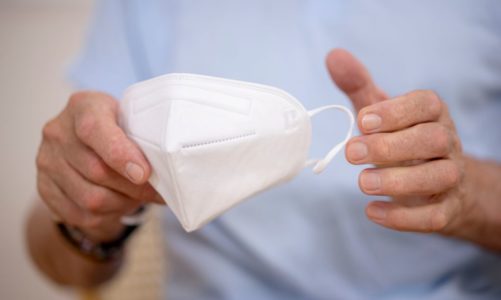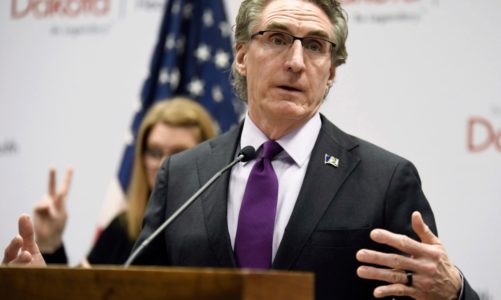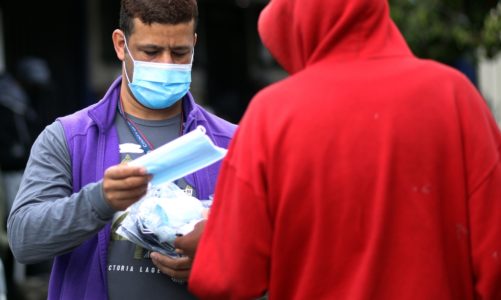
Ian Munro | The Virginian-Pilot (TNS)
Dr. Robert Haley still has questions.
“You’re always just trying to relieve this frustration that you don’t know the answer,” Haley said.
The University of Texas Southwestern Medical Center researcher is among those who have studied an illness afflicting thousands of Gulf War veterans since the mid 1990s.
“First we proved that it was a disease and that it was an injury,” Haley said. “Then we proved that Sarin gas did it and then we’ve got this gene-environment interaction and the guys that are sick — it’s not their fault; they were born with a susceptibility.”
From the beginning, it was considered a mystery disease due to a lack of records of what every person was exposed to every day, according to Haley.
“This is no longer a mystery disease,” he said.
Using genetics, a study released by Haley and others last year linked the malady noted to cause respiratory complaints, sleep disturbances, forgetfulness, and muscle and joint pain, to the deadly chemical weapon Sarin. This study was another step in theory about the illness that afflicts roughly one-third of the 700,000 veterans deployed to the Persian Gulf is brain inflammation.
Before the first Gulf War, Saddam Hussein “had the second largest arsenal of nerve gas in the world,” said Haley.
Earlier this month, the VA and National Institutes of Health began a five-year pair of studies to better diagnose and potentially discover a treatment for the illness.
After 10 years researching epidemiology, Haley met in 1994 with Ross Perot, the Texas business magnate who had just failed in an independent candidate bid for the presidency.
Perot was looking for advice about a troubling trend he was hearing from veterans of the Gulf War. Perot, also a veteran, went on to describe “Gulf War Syndrome” and wasn’t sure the soldiers were getting the care they needed.
Haley said he remembers Perot showing him photos of soldiers who he described as looking like Arnold Schwarzenegger before the war and then like the prisoners of a concentration camp in years following the conflict.
Perot, who died in 2019, had resources and was looking to help the veterans and wanted an independent study into what he was meeting with veterans of the conflict, according to Haley.
“He had really piqued my interest — basically what he was describing was an epidemic,” Haley said.
Haley then agreed to do one study. Previous complaints about what would become known as Gulf War Illness were considered post-traumatic stress disorder at first and other psychological disorders, according to Haley.
Haley’s first investigation was on a reserve unit of construction troops who were civilians after the conflict. With 250 of the reservists signed up thanks to Perot’s help, Haley found two-thirds of them had this mystery illness through a questionnaire and neurophyschological battery. From there, the study expanded to more cities.
At first, Haley was skeptical, “but boy, talking to them and talking to their wives particularly this was something really serious and was impairing their function,” he said.
He brought the data back and analyzed it.
“Clearly, there was a disease and the symptoms were pretty uniform,” Haley said.
The data pointed to risk factors primarily as being in areas with exposure to levels of nerve gas in the air, according to Haley.
“We had all these high-tech weapons and nuclear capability and all this stuff, but we had a really primitive defense against nerve gas,” Haley said — rubber suits, gas masks alarms and a common drug to make nerve gas less lethal.
A Sarin gas storage facility was blown up in the air campaign and though much of the gas had dissipated, alarms went off and soldiers donned protection gear. But the levels were so low, the alarms were figured to be false, according to Haley.
“Now we know, 30 years later, there’s been tons of research showing that even low-level exposure can produce permanent brain effects,” Haley said.
Jim Tuite, former lead investigator for the Senate committee looking into the syndrome, produced a report about such a situation to the committee.
Haley asked Perot to fund another study with about 40 soldiers. These sorts of efforts in the 90s proved the illness was its own disease.
Next, evidence pointed to a gene that different soldiers had which provides to the effects of Sarin gas, Haley said.
“Our theory was then that if Sarin was the cause, then we would expect people who have the illness to be born with the weak form of that gene,” Haley said.
As research was compiled, more people contributed — such as Congress and the Department of Defense, he said.
In 2007, they designed a huge study telephone questionnaire for which the military helped researchers to contact soldiers, according to Haley.
He said 8,000 soldiers from the Gulf War era responded to questionnaire with more of an emphasis on contacting those who deployed in the conflict. The questionnaire included if a nerve gas alarm went off.
From there, they were able to get 2,000 for DNA to again examine the soldier’s gene’s strength against Sarin.
Those soldiers who said they had heard a nerve gas alarm and had a weak form of the gene: “whoosh,” Haley said, as it explained many cases. However, he added that even those with stronger forms of the gene who heard multiple chemical weapon alarms over and over could still develop symptoms.
That paper was released in May 2022 in toxicology journal Environmental Health Perspectives, supported by one NIH institute after over a year of review to ensure correlation was in fact causation in this case, Haley said.
Like the VA and NIH, Haley continues to work to find a cure. He said when breakthroughs have occurred, like any good scientists, his first question is always to question his own findings and ensure they are solid.
“You go over and over them, reproduce them in another, test it another way to see if it stands up and by the time you get to where we are now and right now I don’t even think about what we’ve done I’m just totally into trying to figure out how do we now nail this finding down about inflammation,” he said.
“I’ll have great satisfaction then when hearing a bunch of veterans say they feel better,” he said.
©2023 The Virginian-Pilot. Visit at pilotonline.com. Distributed by Tribune Content Agency, LLC.
𝗖𝗿𝗲𝗱𝗶𝘁𝘀, 𝗖𝗼𝗽𝘆𝗿𝗶𝗴𝗵𝘁 & 𝗖𝗼𝘂𝗿𝘁𝗲𝘀𝘆: www.mercurynews.com
𝗙𝗼𝗿 𝗮𝗻𝘆 𝗰𝗼𝗺𝗽𝗹𝗮𝗶𝗻𝘁𝘀 𝗿𝗲𝗴𝗮𝗿𝗱𝗶𝗻𝗴 𝗗𝗠𝗖𝗔,
𝗣𝗹𝗲𝗮𝘀𝗲 𝘀𝗲𝗻𝗱 𝘂𝘀 𝗮𝗻 𝗲𝗺𝗮𝗶𝗹 𝗮𝘁 dmca@enspirers.com




